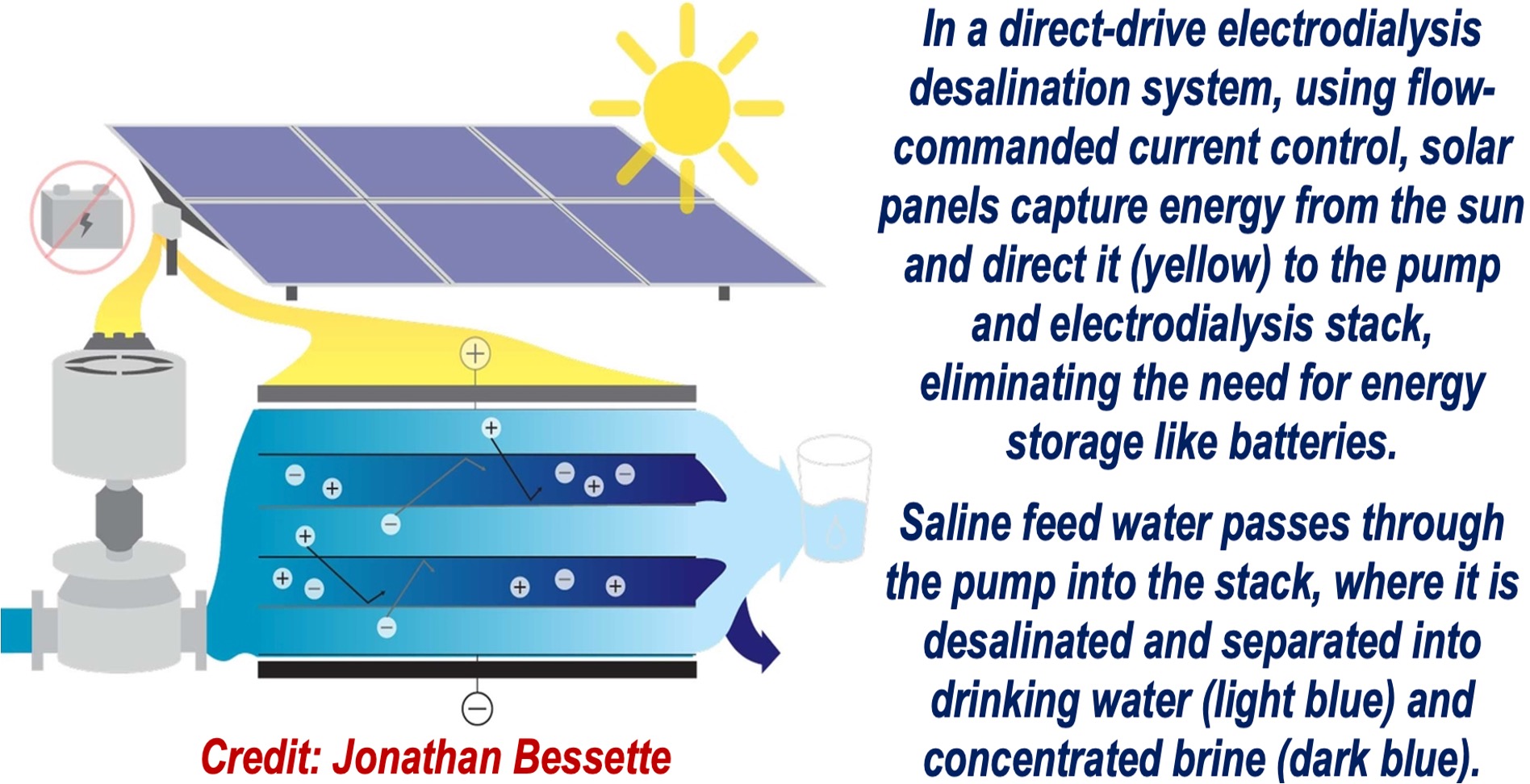MIT Engineers Develop a Revolutionary Solar-Powered Desalination System
MIT engineers have developed a groundbreaking desalination system powered entirely by solar energy, which operates without the need for additional batteries.
This innovative system has the potential to provide clean drinking water at low costs, especially in regions with limited access to energy resources, making it a game-changer for inland and low-income communities around the world.
The researchers published their findings in the well-known, peer-reviewed journal Nature Water (see citation below).
Solar-Powered Desalination – No Extra Batteries
The system, designed to desalinate brackish groundwater, removes salt from water by using the natural variations in solar energy throughout the day.
As the intensity of sunlight increases, the system speeds up its desalination process, and as sunlight decreases, such as during cloud cover, the system automatically adjusts to reduce power consumption.
This flexibility enables the system to operate efficiently without relying on expensive energy storage or backup power from traditional grids.
Unlike other solar-driven desalination technologies that require battery storage to smooth out fluctuations in sunlight, the MIT system can dynamically adjust its operation based on real-time changes in solar energy.
It uses over 94% of the electrical energy produced by its solar panels and can generate up to 5,000 liters of clean water per day, even under varying weather conditions.

A Solution for Remote and Water-Stressed Regions
The system is specifically aimed at areas where access to freshwater is becoming increasingly scarce due to climate change and other environmental factors.
Brackish groundwater, which contains higher levels of salt than freshwater but is more abundant than fresh groundwater, can be a vital source of drinking water if desalinated.
This new technology can be a valuable resource for inland communities that do not have access to seawater or reliable electricity, offering them a sustainable and affordable solution to their water needs.
According to Jonathan Bessette, an MIT PhD student involved in the project, “This technology could bring sustainable, affordable clean water to underreached places around the world.”
In regions where traditional desalination methods are not feasible, this system offers a practical alternative by tapping into a renewable energy source to provide clean water without the high costs associated with energy storage.
How It Works: Electrodialysis Powered by the Sun
The heart of the system lies in its use of electrodialysis, a process that removes salt ions from water using an electric field.
Electrodialysis is an alternative to reverse osmosis, another desalination method that forces water through membranes to filter out salts. While both methods can be powered by renewable energy, electrodialysis is more flexible and adaptable to the natural fluctuations in solar energy.

The new MIT system builds on earlier designs by improving the speed at which it can respond to changes in sunlight.
In their latest version, engineers incorporated a “flow-commanded current control” strategy, which allows the system to adjust its water production rate in real-time.
The control system senses the amount of solar power being generated and adjusts the flow of water and electrical current accordingly, ensuring optimal efficiency throughout the day.
By reacting to changes in sunlight three to five times per second, the system eliminates the need for extra batteries or supplementary power.
As sunlight increases, the system ramps up the desalination process; when sunlight decreases, it dials back the operation. This near-instantaneous adjustment allows the system to maximize water production while minimizing energy waste.
Field Testing and Future Development
The MIT team tested a community-scale prototype of their system over six months in New Mexico, where it operated on groundwater wells under a range of weather conditions.
The results were impressive: the system consistently harnessed more than 94% of the energy produced by its solar panels, producing enough water to meet the daily needs of a small community of about 3,000 people.
This battery-free solar-powered desalination system represents a significant advancement in the field of renewable energy-driven water production.
As Amos Winter, a professor of mechanical engineering at MIT, explains, “Being able to make drinking water with renewables, without requiring battery storage, is a massive grand challenge. And we’ve done it.”
Looking ahead, the researchers aim to scale up their system to serve larger communities and even entire municipalities. They are also working to reduce costs and enhance the reliability of the system, making it an even more attractive solution for water-scarce regions.
The team is preparing to launch a company that will bring this technology to market, providing a vital tool for addressing global water shortages.
A Sustainable Future for Water Desalination
With climate change accelerating the salinization of groundwater in many parts of the world, innovative solutions like MIT’s solar-powered desalination system are essential for ensuring access to clean water.
By eliminating the need for energy storage and maximizing the use of renewable energy, this technology offers a sustainable, cost-effective way to provide clean water to communities in need.
As the system is further tested and refined, it holds the promise of transforming water desalination practices on a global scale, reducing dependence on traditional energy sources, and making clean water more accessible to all.
Citation
Bessette, J. T.-Y., Pratt, S. R., & Winter, A. G. V. (2024). Direct-drive photovoltaic electrodialysis via flow-commanded current control. Nature Water. https://doi.org/10.1038/s44221-024-00314-6
